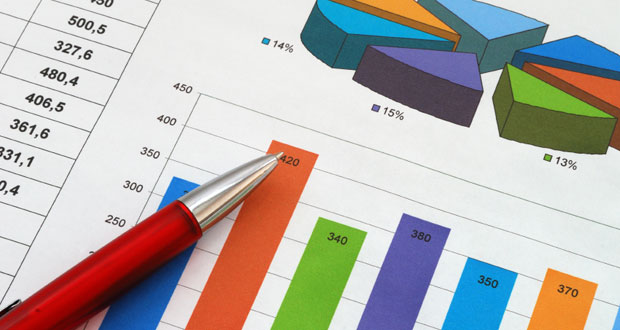NEW YORK – Total advertising expenditures in the first quarter of 2010 rose 5.1 percent from a year ago and finished the period at $31.3 billion, according to data released by Kantar Media, the leading provider of strategic advertising and marketing information. This marks the first increase in quarterly ad spending since Q1 2008 and the largest gain since Q1 2006, as the ad market finally experienced a long-awaited rebound.
“With the economy turning from recession towards growth, marketers appear to be more confident about a pickup in consumer activity and have increased ad budgets to support their brands,” said Jon Swallen, SVP Research at Kantar Media. “While the rising tide has thus far benefited some media sectors more than others, Q1 spending hikes were broadly distributed across advertisers and categories and that’s an encouraging signal for the market going forward.”
Measured Ad Spending By Media
Of the nineteen media types tracked by Kantar Media, thirteen experienced a spending increase in the first quarter. At the forefront, Spot TV surged 22.0 percent on a torrent of additional money from the automotive, retail, financial service and political categories. Despite this growth, current spending volume in Spot TV has only recovered to a level last seen in 1997.
Other television media types also performed strongly. Network TV expenditures received a boost from the Winter Olympics and finished the period up 11.6 percent. Cable TV (+8.2 percent) and Spanish Language TV (+7.2 percent) each benefitted from selling more ad time and strengthened demand among across a broad range of package goods and retail advertisers.
After a three year slump, radio ad expenditures finally had a turnaround. National Spot Radio advanced 19.0 percent and was paced by higher spending from the telecom, financial service and auto categories. Local Radio (+4.6 percent) and Network Radio (+3.0 percent) were also up.
Print media, on the whole, continued to lag the overall ad market. Consumer Magazine spending fell 3.9 percent from a year ago while Local Newspapers dropped 5.6 percent. There was improvement in some narrow segments as Sunday Magazine expenditures jumped 13.7 percent and National Newspapers increased 9.1 percent, primarily from gains at the Wall Street Journal.
Percent Change in Measured Ad Spending1
MEDIA SECTOR — Media Type
(Sectors and types listed in rank order of spending)
Jan – Mar 2010 vs. 2009
TELEVISION MEDIA 10.5%
— Network TV 11.6%
— Cable TV2 8.2%
— Spot TV3 22.0%
— Spanish Language TV4 7.2%
— Syndication – National -13.2%
MAGAZINE MEDIA5 -3.2%
— Consumer Magazines -3.9%
— B-to-B Magazines -8.4%
— Sunday Magazines 13.7%
— Local Magazines -7.1%
— Spanish Language Magazines 1.5%
NEWSPAPER MEDIA6 -3.7%
— Local Newspapers -5.6%
— National Newspapers 9.1%
— Spanish Language Newspapers 4.5%
INTERNET (display ads only) 5.0%
RADIO MEDIA 7.4%
— Local Radio7 4.6%
— National Spot Radio 19.0%
— Network Radio 3.0%
OUTDOOR -0.4%
FSIs8 12.8%
TOTAL 5.1%
Source: Kantar Media
1. Figures are based on the Kantar Media Stradegy™ multimedia ad expenditure database across all measured media, including: Network TV (6 networks); Spot TV (125 DMAs); Cable TV (71 networks); Syndication TV; Hispanic Network TV (4 networks); Consumer Magazines (225 publications);,Sunday Magazines (7 publications); Local Magazines (26 publications); Hispanic Magazines (17 publications); Business-to-Business Magazines (351 publications); Local Newspapers (147 publications); National Newspapers (3 publications); Hispanic Newspapers (49 publications); Network Radio (5 networks); Spot Radio; Local Radio (32 markets); Internet; and Outdoor. Figures do not include public service announcement (PSA) data.
2. Cable TV figures do not include Hispanic cable networks.
3. Spot TV figures do not include Hispanic stations.
4. Spanish Language TV includes 4 Hispanic broadcast networks, 4 Hispanic cable network and 71 local Hispanic TV stations.
5. Magazine media includes Publishers Information Bureau (PIB) data and reflect print editions of publications.
6. Newspaper media figures reflect print editions of publications.
7. Local Radio includes expenditures for 32 markets in the U.S.
8. FSI data represents distribution costs only.
Measured Ad Spending by Advertiser
Expenditures for the ten largest advertisers in the first quarter jumped 10.6 percent to $4.34 billion. Among the Top 100 advertisers, a diversified group representing nearly one-half of the measured ad economy, spending was up 11.0 percent to $14.89 billion. The long-tail of small advertisers – defined as those outside the Top 1000 – were far below these growth rates and posted a 1.1 percent decline in their aggregate media investments.
Procter & Gamble kept its position as the largest advertiser with $772.6 million in spending, an increase of 17.7 percent versus a year ago. The company continued to shift budgets towards magazines and away from television.
AT&T rose to the second spot with spending of $576.4 million, up 26.7 percent, behind a large television ad buy in the Winter Olympics. Rival Verizon Communications reduced its total expenditures by 9.1 percent, to $517.2 million. Both telecom companies continued to allocate more resources to promote their TV service products as they try to win subscribers from cable and satellite operators.
Pfizer posted the highest growth rate with expenditures up 46.2 percent to $396.4 million as the company maintained aggressive marketing support for Lipitor prior to the brand going off patent in 2011. With auto industry sales picking up, General Motors accelerated its spending by 28.5 percent to $533.7 million and accounted for more than one-fourth of all ad dollars spent by auto manufacturers.
News Corp (+7.8 percent, to 366.8 million) and Time Warner (+14.7 percent, to $304.3 million) also had notable increases. At both companies the results were primarily shaped by their movie studio divisions
Top Ten Advertisers Of Q1 20101
Rank Company
Jan – Mar 2010 ($Millions)
Jan – Mar 2009 ($Millions)
% Change
1 Procter & Gamble Co $772.6 $656.5 17.7%
2 AT&T Inc $576.4 $455.0 26.7%
3 General Motors Corp $533.7 $415.5 28.5%
4 Verizon Communications Inc $517.2 $569.1 -9.1%
5 Pfizer Inc $396.4 $271.1 46.2%
6 News Corp $366.8 $340.4 7.8%
7 Johnson & Johnson $344.1 $390.3 -11.8%
8 Time Warner Inc $304.3 $265.3 14.7%
9 Walt Disney Co $267.6 $303.6 -11.8%
10 General Electric Co $264.6 $261.3 1.3%
TOTAL2 $4,343.9 $3,928.0 10.6%
Source: Kantar Media
1. Figures do not include FSI, House Ads or PSA activity.
2. The sum of the individual companies may differ from the Total shown due to rounding.
Measured Ad Spending by Category
Expenditures for the ten largest advertising categories rose 7.8 percent in the first quarter and totaled $17.95 billion. All but one of the Top Ten categories was up, indicating broad participation in the ad spending recovery.
Automotive was the leading category by dollar volume and also had the highest growth rate among the Top Ten as spending soared 18.6 percent to $3,016.8 million, ending a streak of 18 consecutive quarterly declines. Manufacturers and dealerships reacted quickly to an improving sales environment by ramping up marketing efforts with TV, magazines and radio being the main beneficiaries.
Telecom was the second largest category as expenditures reached $2,276.5 million, an increase of 10.6 percent. Financial Services also experienced a revival with outlays up 10.1 percent to $2,028.7 million. Sharply higher spending from marketers of credit cards and loan products offset continued weakness within the consumer banking segment.
Packaged goods categories, where advertisers took advantage of soft ad pricing in 2009 to bolster their media weight, were undaunted by rising ad prices in the first quarter of 2010. Spending from Food & Candy was up 7.3 percent to $1,600.0 million and expenditures for Personal Care Products increased by 5.5 percent to $1,311.5 million.
Restaurant category spending also turned around with modest growth of 3.1 percent, to $1.454.5 million. A major contributor to the gain was McDonald’s television sponsorship of the Winter Olympics.
Top Ten Advertising Categories Of Q1 20101
Rank Category
Jan – Mar 2010 ($Millions)
Jan – Mar 2009
($Millions) % Change
1 Automotive $3,016.8 $2,544.6 18.6%
— (Manufacturers)
$1,962.1 $1,634.6 20.0%
— (Dealers)
$1,054.7 $910.0 15.9%
2 Telecom $2,276.5 $2,059.0 10.6%
3 Financial Services $2,028.7 $1,841.9 10.1%
4 Local Services $1,895.0 $1,819.5 4.1%
5 Miscellaneous Retail2 $1,668.4 $1,532.2 8.9%
6 Food & Candy $1,600.0 $1,490.6 7.3%
7 Direct Response $1,569.3 $1,621.5 -3.2%
8 Restaurants $1,454.5 $1,411.0 3.1%
9 Personal Care Products $1,311.5 $1,242.6 5.5%
10 Pharmaceuticals $1,154.2 $1,113.7 3.6%
TOTAL3 $17,974.8 $16,676.7 7.8%
Source: Kantar Media
1. Figures do not include FSI or PSA activity.
2. Miscellaneous Retail does not include these retail segments: Department Stores, Home Furnishing/Building Supply Stores.
3. The sum of the individual categories may differ from the total due to rounding.
Branded Entertainment
Kantar Media continuously monitors Branded Entertainment within network prime time and late night programming. The tracking identifies Brand Appearances and measures their duration and attributes. Given the short length of many Brand Appearances, duration is a more relevant metric than a count of occurrences for quantifying and comparing the gross amount of brand activity that viewers are potentially exposed to in the program versus the commercial breaks.
In the first quarter of 2010, an average hour of monitored prime time network programming contained ten minutes, fifty five seconds (10:55) of in-show Brand Appearances and 14:20 of network commercial messages. The combined total of 25:15 of marketing content represents 42 percent of a prime-time hour.
Unscripted reality programming had an average of 19:42 per hour of Brand Appearances as compared to just 6:59 per hour for scripted programs such as sitcoms and dramas. Late night network talk shows had an average of 11:58 per hour. The combined load of Brand Appearances and network ad messages in these late night shows was 28:21 per hour, or 47 percent of total content time.
Brand Appearances vs. Advertising: Q4 2009
(minutes:seconds per hour)
Brand Appearances
Network Ad Messages1
TOTAL
PRIME TIME NETWORK 10:55 14:20 25:15
Unscripted Programs 19:42 14:26 34:08
Scripted Programs 6:59 14:16 21:15
LATE NITE NETWORK
(Kimmel, O’Brien, Letterman)
11:58 16:23 28:21
Source: Kantar Media
1 Figures include network advertisements, station promotions and PSAs. Local commercial time is excluded.
The top five brands ranked by total amount of Brand Appearance time were Coca-Cola, Asics, 24 Hour Fitness Center, Brita Water Purifiers and Yamaha Music Equipment.
About Kantar Media
Established in more than in 50 countries, Kantar Media enables exploration of multimedia momentum through analysis of print, radio, TV, internet, social media, and outdoors worldwide. Kantar Media offers a full range of media insights and audience measurement services through its global business sectors – Intelligence, Audiences and TGI & Custom. Combining the deepest expertise in the industry, Kantar Media tracks more than 3 million brands and delivers insights to more than 22,000 customers around the world. (www.KantarMediaNA.com).







